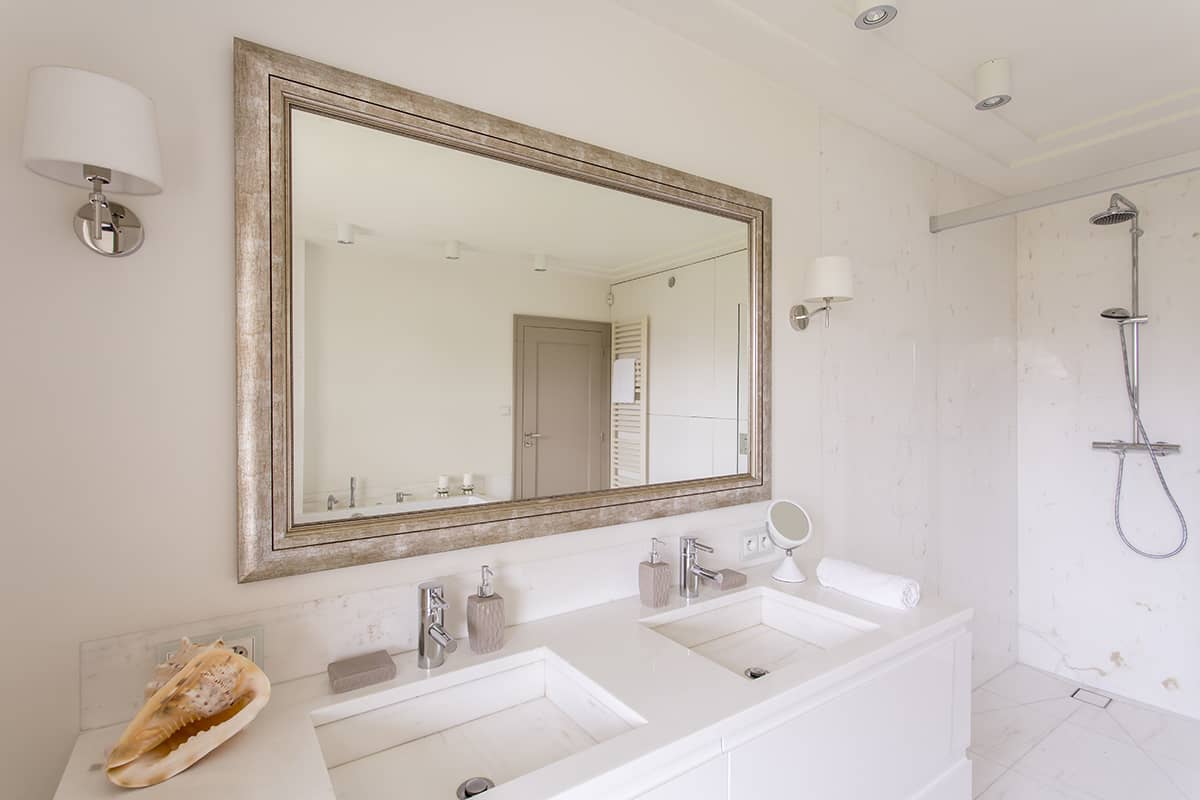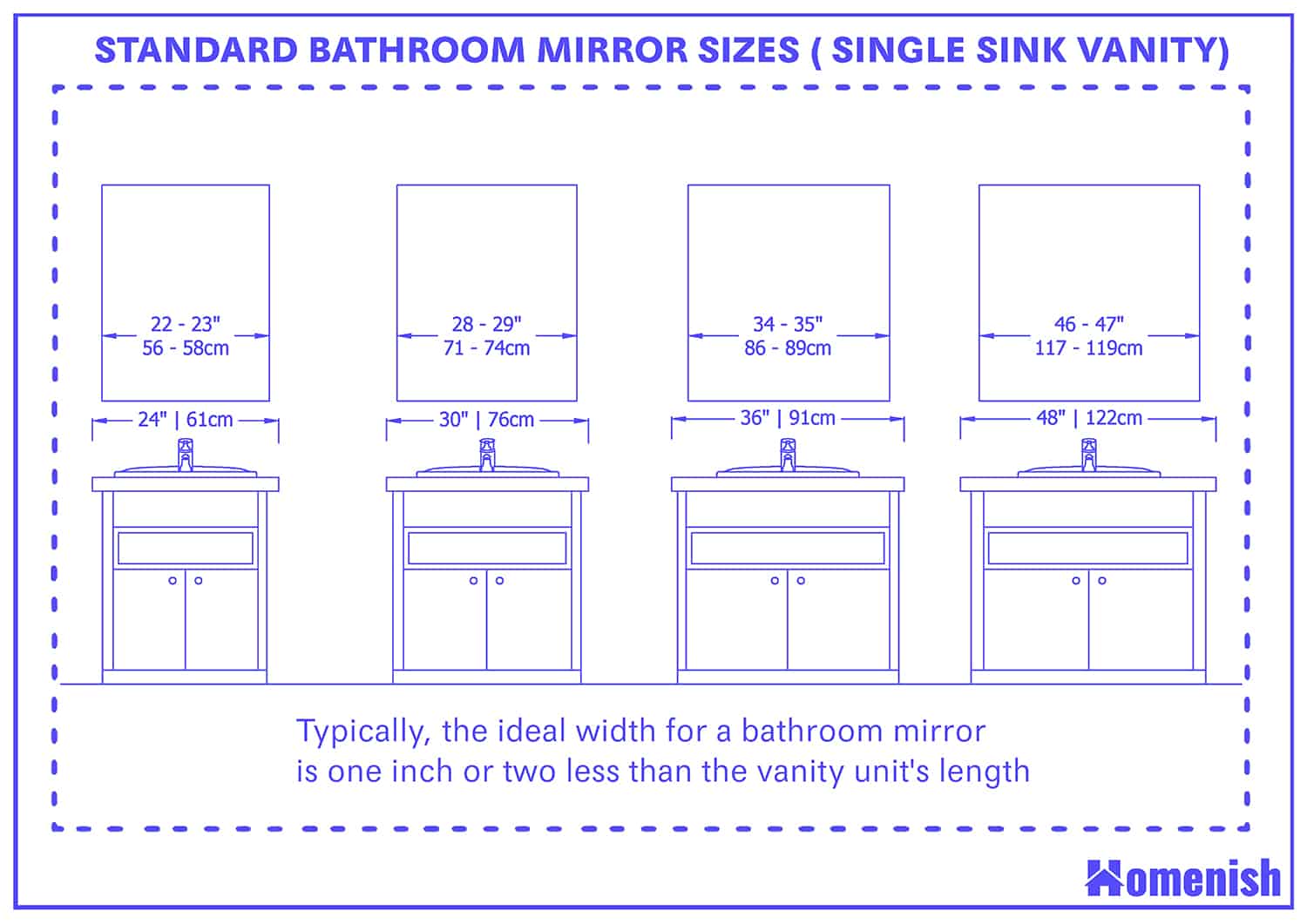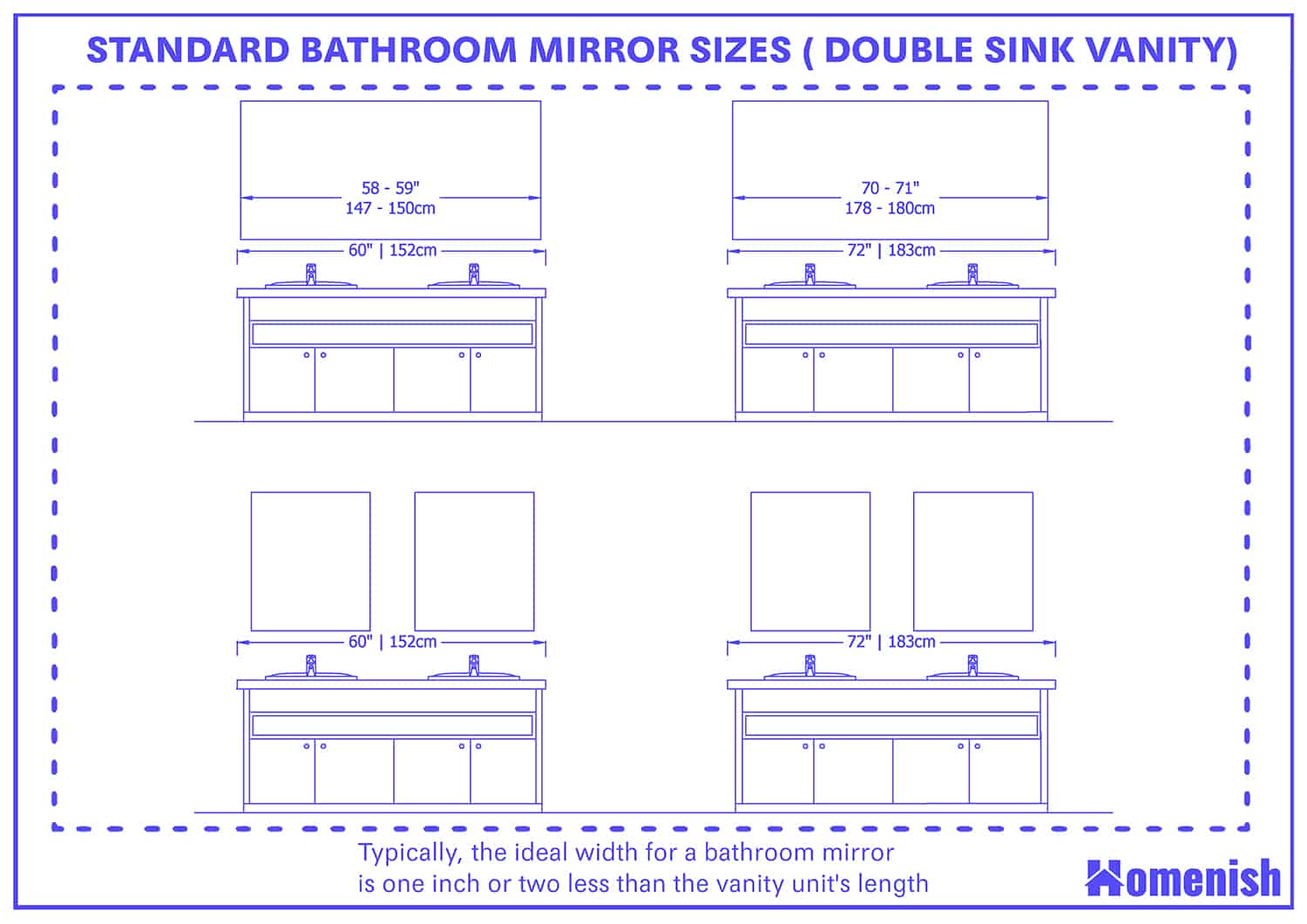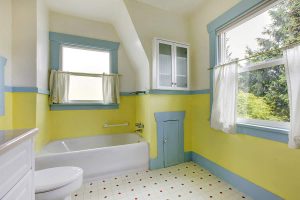Bathroom mirrors help to reflect light in a bathroom and give it a more finished look, and they are also essential if you want to be able to see your reflection when shaving your face, applying make-up, or styling your hair.
Bathroom mirrors come in a wide range of sizes, and you can also use some types of mirrors that are more decorative and are not specifically intended for bathrooms, and these may have more non-standard dimensions. To figure out the best size of mirror for your bathroom, consult our useful guide below.
The bathroom mirror doesn’t have a standard size; it will vary based on the vanity size. Typically, the ideal width for a bathroom mirror is one inch or two less than the vanity unit’s length. For example, if your vanity unit is measured 48 inches in width, the mirror should be 46 or 47 inches wide.
Bathroom Mirror Width
Mirror Size For Single Sink Vanity
Bathroom mirrors do not actually come in standard sizes; however, vanity units do. Standard sizes for a single sink vanity unit are 24 inches wide, 30 inches wide, 36 inches wide, and 48 inches wide. This is useful to know because, in order for your bathroom mirror to look in scale with the rest of the room, the width of the mirror should not exceed the width of the vanity unit.
The ideal width measurement for a bathroom mirror is an inch or two less than the width measurement of the vanity unit. So if your vanity unit is 36 inches wide, for example, then your mirror should be 34 or 35 inches wide.
This guideline includes the size of the frame, so measure the total width of the mirror and frame, rather than just the mirror itself. If the mirror overhangs the sides of the vanity unit, then it will look out of proportion with the bathroom and can make the mirror itself look like a dominating feature rather than it blending in.
Mirror Size For Double Sink Vanity
If you have a double sink vanity unit, then your vanity will usually measure either 60 inches wide or 72 inches wide. In this case, you can follow the guidelines above and opt for one mirror, which is 2 inches less in width than the vanity unit, or you might want to choose two separate mirrors and hang one over each sink.
In this case, each mirror should be centered over each sink while still following the principle that the mirror should not hang over the edge of the vanity unit.
Remember that these measurements include the bathroom mirror frame if you are choosing a mirror that has a frame.
Bathroom Mirror Length
The length or height of the mirror is going to depend on a few different factors.
First of all, you need to consider the height of the people who are going to be using the mirror. Each person should be able to see their whole face and hair in the mirror, without the top of their head or the bottom of their chin being cut off.
If you have tall people in your family, then this may mean your mirror has to have a longer length than usual so that they are able to use it. You will also need to think about the height of your wall, as this can restrict the height of the mirror you can have, as well as any obstacles on the wall that might get in the way of a mirror, such as a shelf or wall sconces.
Position
The most popular position for a bathroom mirror is above the vanity unit. This makes logistical sense because you can see your face while using the sink. For example, if you are shaving your face or brushing your teeth. Having a bathroom mirror over the vanity also helps to create a feeling of balance in the room.
The position of your bathroom mirror is important for aesthetic purposes as well as practical purposes. When you have bought your mirror, you will need to measure out where on the wall it is going to be fixed into place. It should be set exactly in the center of the vanity unit.
If your vanity unit is two inches wider than your mirror, then the mirror should be positioned so that one inch of wall space is vacant on either side of the mirror to line up with the middle of the vanity unit. If it is off-center, it will look odd, so be sure to measure it correctly before drilling any holes.
The height that the mirror is positioned at should also be measured. Here you will need to factor in any other decorations on the wall. For example, if you have a wall light at the top of the wall, you should measure the point from the base of the wall light to the top of the vanity unit, and then fix the mirror halfway between these two points so that it looks centered. If you don’t have anything else on the wall, use the surface of your vanity unit and your faucet as a guide.
In general, you should have the mirror fitted 5 inches above the surface of the vanity unit or 2 to 3 inches above the top of the faucet. You’ll also want to make sure the mirror is positioned at a height that is suitable for everyone in the family. If you have children wanting to use the mirror, then you might need it positioned slightly lower, or for taller households, you could have it fixed higher than usual.
Exceptions
Some people don’t hang their mirror over the vanity unit as we have described here and instead choose to fit the entire wall behind the vanity unit with a mirror. This can work really well in modern bathrooms to give a sleek look. It is also great for reflecting light and creating a bright and airy space, which can be beneficial in small bathrooms.
Having a wall-sized mirror is also a practical option for families because it means more than one person can use the mirror at once, and you can see more of your body’s reflection than just your head and shoulders. This type of mirror will need to be custom measured to the size of your bathroom wall and is usually set in place with adhesive.








